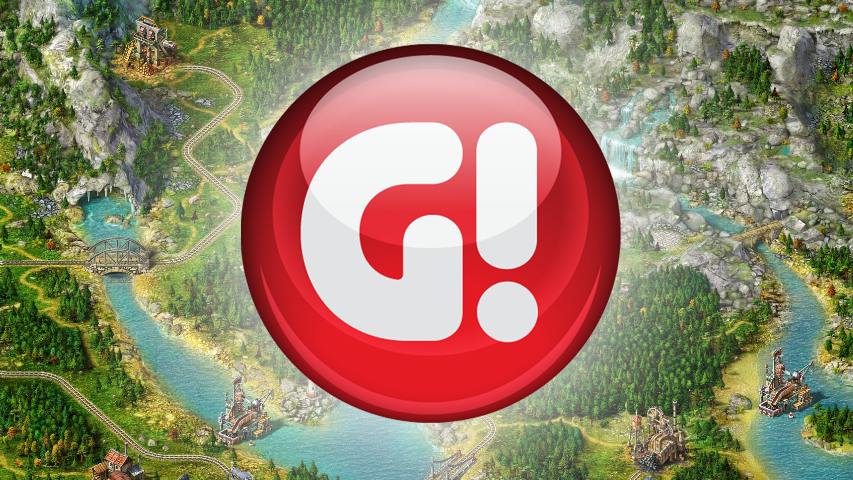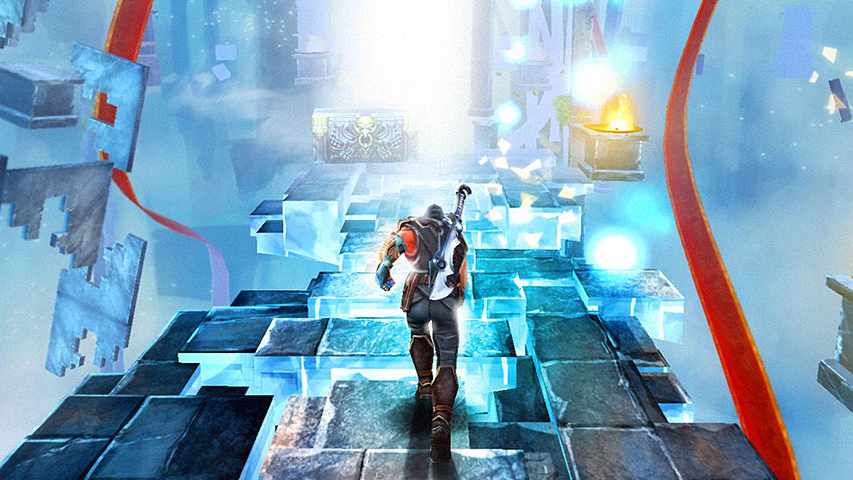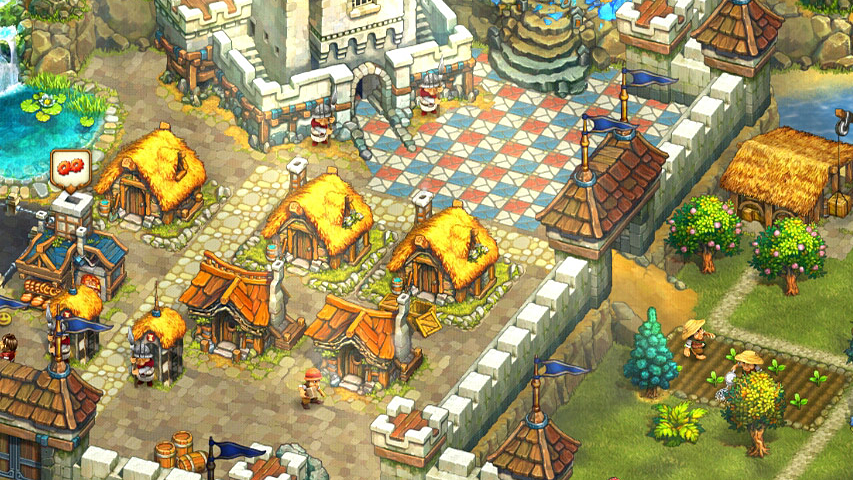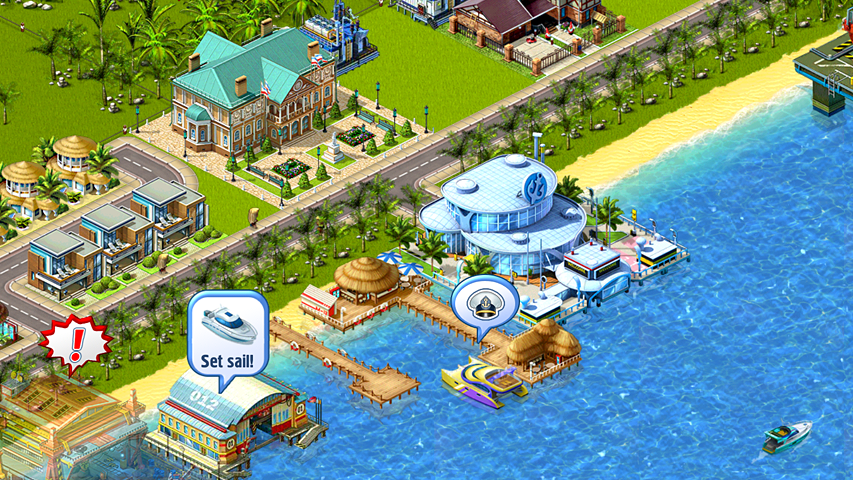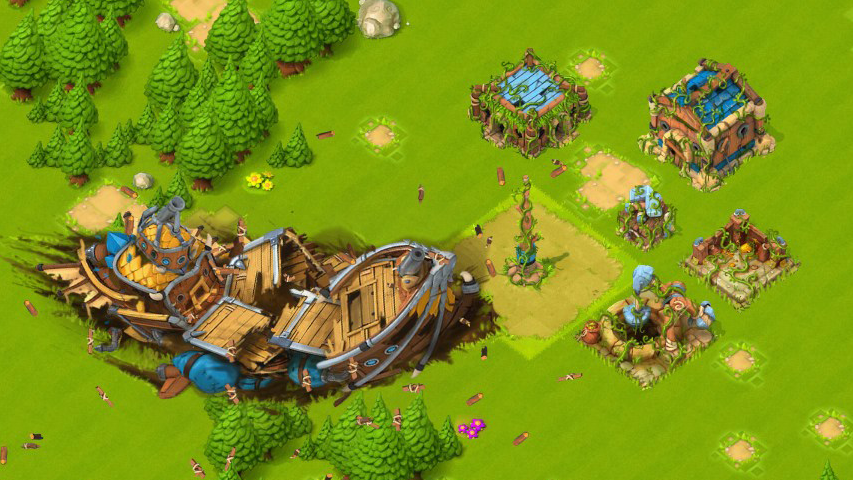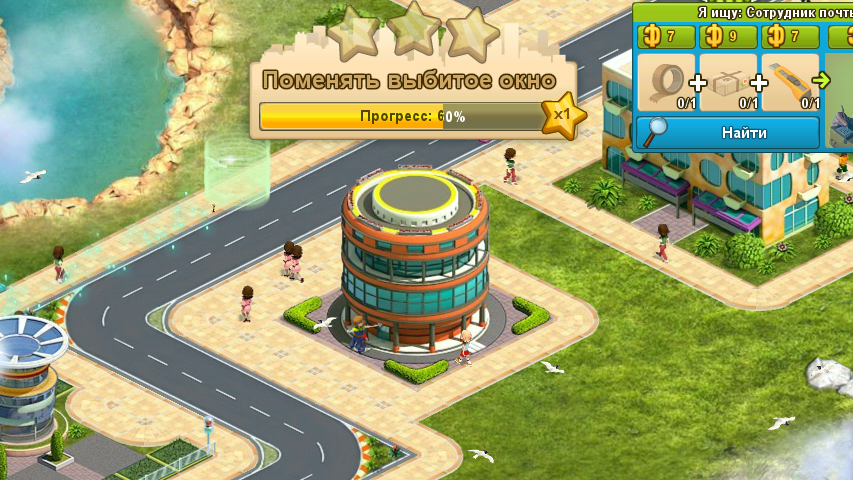The Appintop podcast interviewed Maxim Donskikh, vice president of Game Insight Publishing, on the topic “Alive or not alive Free-to-play”. We publish its printed version with the kind permission of the podcast on App2Top.ru .
The full audio version of the interview can be downloaded on iTunes or Tunein.
Maxim Donskikh
The theme is set like this – “Alive or not alive Free-to-play”, whether he will be or not. But those who are stewing in this have been aware for a long time that this is not a question at all, and there is no Free-to-play future.
Free-to-play has already won. In any case, on mobile platforms, everyone who earns, earns exactly according to this model.
Can you list the necessary conditions for Free-to-play to really work? What are people willing to pay for and what are they not willing to pay for?
We are ready to pay for everything, but it is clear that different people and different amounts.
There are obvious things. First: you’re selling functionality. That is, you can play for free, but some features are only available for money.
The second option: you can sell completely useless things, for example, beauty – some skins, fintiflyushechki. This works very limited and worked before, but now it works, perhaps, only in Asia.
The third category: people pay for progress – the main share of Free-to-play is concentrated in this area. People pay either for progress itself or for accelerating progress. A mechanic like this sells a million, starting from premium World of Tanks accounts, when pumping is faster if you paid, ending with the sale of energy, etc.
Does the genre, setting, mechanics and other things affect whether Free-to-play will work or not? Maybe there are some other factors that need to be taken into account for success?
There are quite extreme situations in which this may not work.
For example, Free-to-play works poorly in arcades. The fact is that the interest of these games is to pass this arcade. The basic Free-to-play model – paying to overcome some obstacles or to accelerate progress – does not work here, because you deprive yourself of the pleasure of the game for your money.
This partly applies to all games that are strongly tied to the gameplay, where you are interested in passing the plot, the level – you like the process of the game. It may work worse there, because it is important not to worsen the impression of the game for your money.
Running Shadow
As for the setting and some such things, they do not affect monetization, but they affect the audience. By choosing unpopular genres and setting, you are simply narrowing your audience and, obviously, you will earn less from it, even if this audience pays as well as any other.
When embarking on the Free-to-play path, it is necessary to take into account that this is a very content-intensive path. As in any service, you constantly need to develop it, throw in something new (features, content, etc.), because the user should see that the game is endless, roughly speaking, and that it is increasing.
The question of balance: how not to overdo it with this model? Are there any elegant examples of whom to look up to, they say – “Look, the guys have Free–to-play, but everything seems to be so beautifully and well served that it’s not a sin to pay.”
Sin or no sin to pay – it sits in the player’s head, not inside the game. Plus, a lot depends on PR. If you convince the player that it is possible to pass for free, and he believes it, then, of course, he will pay you with great pleasure.
How to sell the feeling that it is still possible?
For example, do not sell anything that cannot be obtained for free. How does it usually work? The player changes time for money. You can play for a long time and you will get money for yourself, with which you will buy something. You can immediately go through the bank and shorten this time. There are other ways.
For example, the same premium account that simply accelerates development – for some reason, players believe that this is a more honest model, although, in fact, it is no different from others.
Speaking of customization, this is exactly the magic – less science, more magic and luck, which distinguishes a successful game from an unsuccessful one.
You have a slider with which you gesture or do not gesture – on one edge there is a large percentage of those paying, a large check, but very large dumps, and on the other – on the contrary.
Let’s say you have 3-5 successful products, and you take and launch another one – do you already know in advance how to arrange these sliders, or is it still an experiment?
It’s an experiment every time. Of course, when developing a game, you set them, for example, based on your previous experience or focusing on some other games, or your inner understanding of how it should be. But then you launch it, and sometimes the reality turns out to be different, and sometimes very different.
A very important point is that it is better to overdo it first and then let it go, than vice versa, because when you clamp users who remember that it was completely different recently, you get a considerable wave of negativity.
Natives and Castles
What is the most important thing in Free-to-play: retention, sociality or monetization?
Sociality is related to retention, it is necessary in order to retain players, so there is a choice between retention and monetization. As I said, it is better not to put the slider in one of the two extreme positions.
Are you looking much more in which direction? Or is it right in the middle of you?
No, it doesn’t happen that way. In the middle is neither yours nor ours. I can say about myself that I put where the money is. I can explain in which case, how to do it.
Retaining a loyal audience is, of course, good, but this asset costs real money to maintain – servers, infrastructure, and, accordingly, the larger the audience, the more money and human resources you spend on its maintenance. Purely by numbers, it is more profitable to have fewer of them, but they paid more.
When you hope that the user will pay you not now, but in three months, you, with a high probability, will simply lose it. Especially if your game is not unique and there are analogues.
It is much easier to take a payment from a user at the first stages, starting from the first or second session, ending with a week, than to expect that he will pay for the first time in three months.
There are many “freeloaders” among Free-to-play players, their number reaches 90-95% of the total audience. What to do with them? To use them cynically, and if so, are there any non-banal techniques, tactics? What to do with the audience that won’t pay?
Firstly, a freeloader is not a sentence. He didn’t pay in the first week, month, and in a year and a half he will still take and pay. You can’t write off a person as a liability right away.
Secondly, if it’s completely cynical, then free players, especially in hardcore games where there is PVP, or some kind of interactive, are meat for those who, either a hardcore player and pumped up, or paid and pumped up – they need to kill someone.
The third point: all these freeloaders bring new freeloaders who may not become freeloaders. We actively use this channel – it is a viralka, which can be passive and active.
Passive veralka is when you have connected Facebook, and it quietly pours Open Graph into your feed. Someone can see it, click it.
Active viralka is when you need your friends in the game for something. For example, in order to send an airplane, we need a co-pilot and they can only be another playing friend. That is, either you buy this pilot, or one such pilot per day for free – we either limit your session, or we charge you money. But most often we try to have this third way – bring friends and they will help you, send you some resource or help you in some other way.
Sunshine Bay
Facebook has now started to clamp down on all these activities very much?
Facebook is clamping down on passive activities. Yes, he also touches the active ones, but not so much. If you consciously send a request to some friend who, as you suspect, can play such games, then he is more likely to come to help you than on a virtual machine.
Let’s talk about mentality: in your opinion, is there a difference in how people perceive Free-to-play in different countries? That is, where does it work better, where is it worse? Maybe the gender, age of the players has weight? Any observations?
Age probably has no effect. Regarding nationality, Asia can be immediately distinguished. There is nothing paid in China at all. In all of them, the sphere of life is like this, either they will steal it from you, or give it away for free – this is the mentality.
There is a similar mentality in Russia.
In Russia, in the wake of browser games, Free-to-play developed 10 years ago.
In those markets where sales of boxed games have traditionally been strong, for example, in America, Free-to-play is more difficult there, but he is walking confidently and will also win everyone. But it is perceived a little worse. Although in the same Europe there is Germany, France, where historically there were strong browser projects, and the Free-to-play model migrated from there to social networks, to mobile games. Therefore, they treat it normally there.
The perception of Free-to-play is rather influenced by nationality, and segmentation by audience: if you are a hardcore player and are used to buying XBox games for 50 euros, then most likely you will have a negative attitude towards Free-to-play. But, in general, the attitude to the games will be different.
Facebook Instagramming is a complete art product when you buy an XBox game, and mobile or social games are more likely to compete with Facebook and Instagram in this regard – at the current stage, you can hardly expect the same depth from them as from games on traditional gaming devices.
Albion Mirrors
There is such an opinion on the market: there are large platforms that embrace developers with one hand, and simply strangle them with the other. Especially when the platform is pumped. She has a million cool apps – developers don’t seem to be needed anymore. You have a zero entry threshold, an army of freeloaders who don’t want to pay. The question is: do the developers see, do they understand these realities, why they start playing this game from the platform. How do they survive?
Developers are sad and like those mice – “prick, cry, but continue to eat cactus,” because it’s still a bargain.
Of course, I would like to launch the game myself in a free independent environment, as browser game developers do: you opened your own website, made a game, attract traffic there yourself, do not share it with anyone, etc. And then platforms come that say, “Dude, you can do this, of course, or you can with us – give us 30%, but we have an ecosystem in which there are already a lot of users, access to which is easier due to our catalogs, viral mechanisms on the platform and many other things.”
It’s still easier to make money with the platform than by yourself. Therefore, even giving a certain percentage, even competing in a highly competitive environment, is still easier than without all this.
There is such a problem – an anchor. There is a positive anchor when we hang three fur coats – one for 20,000 rubles, the second for 70,000 rubles, the third for 200,000 rubles and the task is to buy this fur coat for 20,000, they say, it’s inexpensive. There is a negative anchor when you stand for $2.99, another toy is for $1.99, and the lion’s share of players are worth zero at all. The platform twists your arms, makes you dump. That is, they sell iPhones for 30,000 rubles?
It’s not just the platform that is twisting, but on the contrary – the developers have slipped in their greed. There are platforms, for example, Steam, which do not allow you to set prices yourself, so there is no dumping. As soon as you open the platform and say: “You can sell the game for $50, you can sell it for $30, or you can sell it for $1.”
Manufacturers who sell games in boxes cannot dump, because their production cycle is arranged in such a way that the cost of a particular copy of the game is, conditionally, $ 20, plus they still share with a million partners. As a result, they cannot sell for less than $30, otherwise they will go to a loss.
If we sell the game only in digital form, then you don’t have the cost of selling it. Therefore, publishers and developers gradually drove themselves into this pit dumping, they say, “For 10 I would sell 100,000 copies, and I will drop to $2 and better sell 500,000 copies.”
Cloud Raiders
Don’t you think this is an intent on the part of the platform?
And the platform doesn’t care. I believe that this environment is so arranged that it will drive itself into a minus. And that’s why I came Free-to-play, and again I won everyone, because I brought this idea to the absolute. $10 is a high entry threshold, $1 is lower – why stop? Zero is the lowest entry threshold. Everything. It is no longer possible to go lower.
How to raise the average check in the game? Let’s say I have a need – I want my average check to be not $10, but, for example, $20 or $30. It is clear that there are whales who leave $1,000 in Free-to-play, but I want to reach out to the average player to raise this check.
The answer is nothing. There is a threshold for every game. Here you choose an RPG game, you can expect a high check – from $ 20 to $30. If you chose a farm for simplicity, then $10 – $15 is your chapel. It is possible by some technical means to raise income by interest, but not at times.
There are manipulations with the bank, when you simply redistribute the price of the IAP and the amount of currency that you give for it, you somehow raise, or you give gifts for more expensive IAP and people, instead of buying twice for $ 10, will buy immediately for $ 30.
The idea here is that a specific user will still spend the money he is willing to spend on this game, and you are unlikely to jump higher than that. You can change the payment structure a little, but it won’t change the situation so dramatically.
In the market, many people say: “Here in LTV I can’t make more than $1.5 – $2. Accordingly, advertising traffic costs either the same or more expensive.” How do you survive in the current realities, when your advertising traffic costs about $ 3 per installation, and LTV in such a toy is $ 1.5?
To make games in which LTV is greater. Like all statistics, this is the average temperature in the hospital, counting the seriously ill and the dead. There are games that have $10, there are games that have $30.
X-Mercs
If you have LTV 10, and taking all the freeloaders, it turns out that one paying player leaves $100.
It also happens, for example, Puzzle & Dragons. There are some extreme examples when there are very large percentages of those who pay, and they pay a lot, and on the other hand, games in which no one pays at all.
Give a couple of examples of a game where the LTV is at least more than $2.
These are all midcore games that are now in the TOP-ah: Clash of Clans and all their clones, all kinds of TRAVIAN and their clones.
Somewhere recently I read the news that Kabam buys for $10 and lives with it normally. A correctly found traffic source that returns these 10, and what difference does it make to you what the price of the installation is.
You were talking about sliders: you probably have some kind of tools – please tell me what you use, or do you entrust it to your team of analysts. If so, what do they use to move these sliders? Do you have something self-written?
When developing a game, there is only one tool – called Excel. All dependencies, formulas and graphs are drawn in this program. I can’t say that I do it manually myself.
Then, when the game has already come out, all these formulas are tested in practice and further analytics are needed, some analytical tools that will show.
Do you have self-written tools for this?
We have everything. I’ll digress about analytics and about all sorts of analytical tools: there are no external tools that will solve all your problems, because every game is arranged differently and very different things need to be considered in it.
Today it occurred to you that: “Now I will understand everything if I count such a parameter.” In a self-written tool, you will do it, count it, and it is even possible retrospectively. In the outer toolse, what you are given, use it.But any external tool is very good at doing some common things that everyone needs.
For example, it counts MAU, DAU, distribution by gender, age, territory. That is, it is not necessary to bother with all this yourself. Therefore, we use Google Analytics and Flurry for some classroom macro indicators, and our statistics for microanalytics (for a specific user, by segments, dumps by quest levels, what they pay for, at what point). This is a big piece of Free-to-play life, which developers often don’t think about before the release.
2020: My Country
Any analytics should come from what you need, not from what it can do. Ask the right questions first and then think about how to find the answers to them.
Again, if we are talking about Free-to-play games, then most likely you have or should have a server where Save users are stored for Backup, for their analytics. After all, there is server interaction, and you can already pull some things out of this infrastructure.
To begin with, just run up to the server programmer with a query to SQL and say: “Write me a script that will go through the database of users and pull out the ID of such and such people there.” Then, when you fuck him up, he will take out your most frequent requests to some WEB admin panel and make it easier for himself and you to work. So iteratively it will lead somewhere, somehow.
Do you notice any modifications in this model, what is changing and where will it all go?
On the one hand, it still gets softer. That is, when there were few games, especially we could see it on social networks, when the first social games appeared on VKontakte (this is also Free-to-play – plant any turnip), people there were ready to pay for anything, because there was nothing else, and there was also a novelty effect, you can it was hard to make gestures, no one could say a bad word about you.
Now the competition is such that people somehow got a little used to the diversity in the market, began to understand everything a little, so now we need to be able to interest the player. At the dawn there were games that made you pay, and you haven’t even figured out what exactly, almost like in the case of boxed games. That is, the further away, the more consciously people approach this. This is the first.
Second: Free-to-Play – it is very different, that is, there are many models. There are premium accounts, which, for example, are very popular in Asian countries, where they are called VIP statuses. There is the sale of some specific content, the sale of consumables that you used and they ran out, there is the sale of some levels. And, if the mechanics allow, many today are trying to combine all these things in one game to give all the models and all the possibilities. The Asian Games are especially famous for this, they directly make such food processors, which have everything for everyone.
The Mysterium
At the dawn of the Internet, we had AOL, where they paid for time. Before that, there were machines with payment for attempts when a coin was inserted. Then there was a subscription, Trial, Freemium, now Free-to-play. If you look into the future, what will replace Free-to-play according to your feelings?
It seems to me that this whole evolutionary path just leads to free, and then the singularity.
What is a singularity?
You build some kind of graph and you can see the next point only based on the previous one.
I would shift the focus of the question: what will happen?
Now is a very good time, because if we ignore the general market trends, that Free-to-play has been Paid, and 99% of the money on the Google Play platform earns Free-to-play. Apart from these big numbers, we are in a situation where anything can work.
And you can do this, or you can make a big game for five years and raise a budget for it on Kickstarter, then release it on Steam in “early access”, and again get money from the same users. Then release it on any platform, whether it’s mobile, console – it doesn’t matter.
The current toolkit and the overall gaming ecosystem allows you to do anything, especially if you don’t get hung up. And so you can experiment, try, choose niches.
So we have become more free in this regard?
Yes. It’s a question of ambition: if you want to become a new Supercell or earn a million dollars a day, then it’s clear that you need market data, Free-to-play, investments, etc. And if you have a small team that just wants to earn $10,000 in their free time from school, then there are a million ways and there have never been so many and so easy.

